Ko Samui (เกาะสมุย), often called just Samui (สมุย) is an island of great natural beauty and variety in the Gulf of Thailand. The palm-fringed shoreline and coconut and fruit cultivation of the coastal lowlands rise to a central granite massif, the slopes of which are cloaked in virgin rainforest.
Orientation
Ko Samui is the second biggest in Thailand after Phuket. It is about 700 km south of Bangkok and 80 km from the eastern coastline of Southern Thailand. The most popular and commercialised beaches are Chaweng and Lamai, while the northern beaches and their adjacent villages of Mae Nam, Bophut, Bang Rak (Big Buddha) and Choeng Mon are more peaceful choices, and the west coast beaches are still (comparatively) quiet.
Clockwise from Nathon on the west coast, the main beaches are:
- Nathon — Samui's port and administrative centre.
- Laem Yai — set on the northwest tip of the island, a secluded beach overlooking the islands of Ang Thong
- Mae Nam — a quiet and beautiful beach on the northern coast
- Bophut — known for its Fisherman's Village, laid-back but growing fast
- Bang Rak — at the northeastern tip, home of the Big Buddha
- Choeng Mon — quiet, family-friendly north shore beach
- Chaweng — the largest and most-developed beach, with a curious mix of luxury hotels and backpacker guesthouses and a hopping nightlife
- Lamai — Samui's "second" beach south of Chaweng, is shifting to more of a biker, go go bar, and beach lounge sort of environment. Money has been spent.
- Samui South Coast — the small beaches of Ban Hua Thanon, Na Khai, Laem Set, Bang Kao and Thong Krut
- Lipa Noi – an upcoming beach area south of Nathon
- Lem Hin Khom Coast – set on the Soutwest tip of the island
Understand
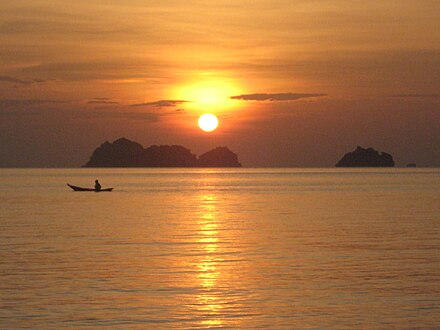
Samui is home to some 50,000 full-time inhabitants, 90% of whom are Buddhist. The island was probably first inhabited about 15 centuries ago, settled by fishermen from the Malay Peninsula and south China. The origin of the name Samui is unknown.
Until the late 20th century, Samui was an isolated self-sufficient community, having little connection with the mainland. The island was even without roads until the early 1970s, and the 15 km journey from one side of the island to the other involved a whole-day trek through mountainous jungle.
In the early 1970s the first backpackers travelling on the back of a coconut boat arrived on Ko Samui. For years after that the island just had a few bungalows and a trickle of travelers. Things started to change in the early 1990s when tourists started arriving in full boats and since then the place has grown substantially. Samui is now the second most popular island destination in Thailand (after Phuket). Ko Samui may not be the country’s most beautiful island but it is still an oasis of natural beauty with its white sandy beaches, dazzling coral, luscious lagoons, picturesque waterfalls, swaying coconut trees, and crystal clear water. The water at Bophut Beach, though, is often murky, especially around December.
Development on Ko Samui has taken its toll and, before COVID, the island saw an average of 2.3 million visitors per year and the beaches of Chaweng and Lamai were overcrowded in the high season. However, the pandemic and the resulting border closures hit the local economy hard, with many hotels, restaurants and other businesses closing. If you can navigate the considerable bureaucracy to get to Thailand, the time to visit is now — it's unlikely the island will ever be this quiet again.
Climate
Samui's weather patterns are a little different from the rest of Thailand. In Apr-Sep, when most of the country has its monsoon, Samui stays fairly dry, but from Oct-Dec, it's wet in Samui and drier elsewhere. The best time to visit is January and February, when it's dry and slightly cooler.
Tides
Ko Samui, like other places on the Gulf of Thailand, has an unusual 12-hour tide pattern. During summer the tide is low at daytime and high at night time, while in winter it is always high at daytime. Beaches are much wider at low tide, and the difference can be huge in places with shallow water. In some places the beach may be very narrow during high tide.
Get in
By plane
Direct flights
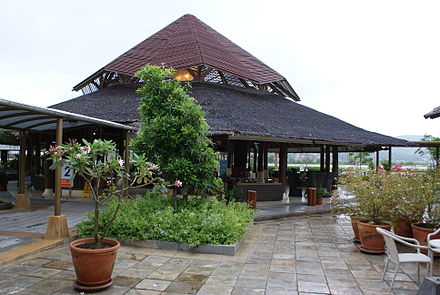
Samui International Airport (IATA: USM), 9.547778°, 100.062222°. The only airport on the island, this lovely private airport was built by Bangkok Airways, which is the sole operator. They have near-hourly departures to/from Bangkok (IATA: BKK), codesharing with Thai Airways for easy connections. Tickets are comparatively expensive, with advance bookings costing 3,000-5,000 baht one-way, while a walk-in booking may be a bit more. There are also daily flights to/from Phuket for 2,000-3,000 baht, Pattaya, Singapore; two daily flights from Chiang Mai (but only one direct flight in the opposite direction). Flights to Chongqing and Chengdu are set to resume in March 2023. 2023-02-01
Visa-on-arrival and visa-free entry are available at Samui Airport for some nationalities. See Thailand for more information. If flying out of the airport, one nice feature is a courtesy corner which provides food and drinks for all passengers in a cosy sitting area. Awaiting boarding becomes rather more comfortable with food, drinks, and Wi-Fi provided free.
Ground transportation from the airport is readily available, but prices tend to be inflated. There's a minibus service at a fixed price per person, with booking at counter in arrival hall. The 20-minute minibus ride to Chaweng costs around 200 baht/person, but may take longer if it shuttles to multiple hotels. A faster taxi directly to your destination may cost 500 baht. Be sure to negotiate the rate to your destination before you get into the taxi as many drivers refuse to use their meters. Many larger hotels and resorts have free airport transfers included in their service, but you need to book in advance. NaviGo and Grab (see By ridehailing) are also available, with fixed prices.
If you're a couple or a family, you may be approached in the airport by some young women holding signs of some of the higher-end hotels. They will ask you where you're staying, and based on the answer, offer you a free taxi ride if you promise to attend a presentation for their hotel's timeshare during your stay.
Flight and ferry
Instead of flying directly to Samui, it's cheaper but less convenient to fly to a nearby airport on the mainland and connect to a ferry. There are three options:
-
Fly to Surat Thani (IATA: URT), which has frequent flights to both Bangkok airports and limited service direct to Kuala Lumpur on Air Asia. Seatran Ferry offers a bus & ferry service from the airport to Nathon Pier on Ko Samui for 400 baht. Travel time is three hours. Buses leave the airport six times per day.
-
Fly to Nakhon Si Thammarat (IATA: NST) from Bangkok-Don Mueang IATA: DMK with Nok Air, then take a bus and catamaran with the Lomprayah Company.
-
Fly to Chumphon (IATA: CJM) from Bangkok-Don Mueang IATA: DMK with Nok Air, then take a high-speed Lomprayah catamaran. This is a particularly good option if you'd like to do some island hopping, since the ferries stop at Ko Tao and Ko Pha Ngan along the way. Nok Air offer a combined flight and ferry ticket on their website.
By boat
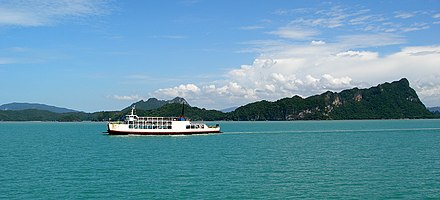 From Surat Thani train station and Surat Thani Airport (URT), there are combined bus/ferry services to Ko Samui costing 200-300 baht. Some entail a 60 minute bus ride to Don Sak pier followed by a 90-minute ferry crossing, others a 30-minute bus ride with a longer ferry crossing. Tickets are sold by numerous agents who meet each train and airplane. Should cost certainly less than 300 baht even if bought this way (return combo boat + bus ticket on a more comfortable Seatran Ferry bought on the Nathon Pier on Samui officially costs 230 baht).
From Surat Thani train station and Surat Thani Airport (URT), there are combined bus/ferry services to Ko Samui costing 200-300 baht. Some entail a 60 minute bus ride to Don Sak pier followed by a 90-minute ferry crossing, others a 30-minute bus ride with a longer ferry crossing. Tickets are sold by numerous agents who meet each train and airplane. Should cost certainly less than 300 baht even if bought this way (return combo boat + bus ticket on a more comfortable Seatran Ferry bought on the Nathon Pier on Samui officially costs 230 baht).
From Don Sak Pier, there are 2 ferry companies (each line has a departure every 60 min) and a smaller passenger boat. Songserm Travel and Seatran arrive at Nathon pier only. Raja Ferry goes serves both Nathon and Lipa Noi pier (9km south of Nathon). Raja ferries are cheaper, smaller and less comfortable.
.jpg/440px-Seatran_Ferry_at_Donsak_Pier_(48107312668).jpg) If you choose for the Raja or Seatran ferry ("high speed") but book it as part of a package deal that includes pickup instead of directly with the company, insist that the name of the ferry company and departure times are written on your receipt and pay attention to where you're taken. Otherwise, the agent that picks you up might just as well drop you at a Songserm transfer "terminal" at a remote location outside town where you have little other options than to accept the slower Songserm ferry instead.
If you choose for the Raja or Seatran ferry ("high speed") but book it as part of a package deal that includes pickup instead of directly with the company, insist that the name of the ferry company and departure times are written on your receipt and pay attention to where you're taken. Otherwise, the agent that picks you up might just as well drop you at a Songserm transfer "terminal" at a remote location outside town where you have little other options than to accept the slower Songserm ferry instead.
Raja Ferries also transport cars, so can be used should you decide to come with your own transport. Without a car, however, there are fewer options for transportation there, and songthaew/taxi drivers may be more reluctant to bargain. Songthaew transfer from the pier at Lipa Noi on Samui to either Chaweng or Lamai will cost 100 baht per person. Taxis will be more expensive, with initial asking prices of up to 1,000 baht.
Numerous ferry services are direct from mainland Surat Thani including Lomprayah catamarans and an express boat (3 departures daily, taking around 3 hours and costing 150 baht) and slow night boats (taking 6–7 hours).
.jpg/440px-Samui_2014,_february_-_panoramio_(107).jpg) Lomprayah offers a combined bus/high speed catamaran ferry service from Bangkok to Ko Samui which takes about 11 hours (5.5 of them by boat) and costs 1450 baht (or 1650 baht for a “VIP” bus, as of May 2022). The bus pauses in Hua Hin and then stops at Chumphon, where it connects with the ferry, which calls at Ko Nang Yuan, Ko Tao and Ko Pha Ngan on its way to Ko Samui. While the route may be more scenic (as it includes the long boat trip via 2 islands), and the ferry is comparable to Seatran, the entire route to Samui will take more time, and will cost more too.
Lomprayah offers a combined bus/high speed catamaran ferry service from Bangkok to Ko Samui which takes about 11 hours (5.5 of them by boat) and costs 1450 baht (or 1650 baht for a “VIP” bus, as of May 2022). The bus pauses in Hua Hin and then stops at Chumphon, where it connects with the ferry, which calls at Ko Nang Yuan, Ko Tao and Ko Pha Ngan on its way to Ko Samui. While the route may be more scenic (as it includes the long boat trip via 2 islands), and the ferry is comparable to Seatran, the entire route to Samui will take more time, and will cost more too.
Lomprayah, however, is a good (if not exactly cheap) option to get to Samui from Ko Tao or Ko Pha Ngan, as well as a reasonable one to get to those islands from Bangkok. Prices and departure times are available on their website. There are also regular speedboats and ferries of other operators.
Regardless of what port you are departing from the mainland or arriving on Samui, you will be offered a minibus transfer service to any place on the island for 150 baht. This seems to be a good option to avoid hassles especially when arriving late and in light of inflated taxi prices (May 2019).
The Lomprayah passengers can often be enough of a deterrent to make a repeat traveler choose the less expensive ferry, regardless of cost. Seatran is as likely to have hawkers and pushers aboard, but in fewer numbers.
Motorcycle taxis are always available for a comparable or slightly lower price to shared minibus down the arrivals pier. This can be a quick escape from shared transportation when exiting the ferry.
Get around
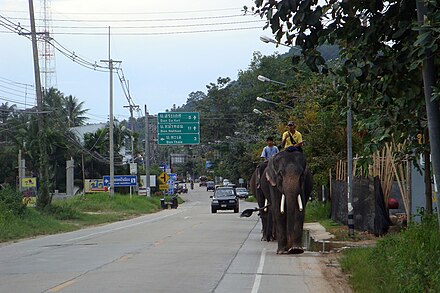 As on many islands in Thailand, small motorbikes are available for rental. Compared to other nearby islands, Samui's road system is very developed and there are plenty of taxis cruising about, although it's a challenge to get them to use their meters.
As on many islands in Thailand, small motorbikes are available for rental. Compared to other nearby islands, Samui's road system is very developed and there are plenty of taxis cruising about, although it's a challenge to get them to use their meters.
By taxi
By day, Ko Samui's public transport is provided by songthaew, pick-up trucks with two rows of seats. They drive fixed routes at fixed prices per person until 18:00, ranging from 20-80 baht depending on distance. After 18:00, songthaews serve as normal taxis and prices must be negotiated first. Even if you pay for a trip, however, the songthaew may stop and pick-up more passengers on the way. Metered taxi service is operated by private taxi companies. The drivers, however, are very reluctant to use their meters, and, especially on popular beaches or entry points to the island, tend to ask foreigners much more than normal fare. Some, say, on Nathon pier, will even show you official-looking papers with "fixed" prices like 600-800 baht for a 25–30 km trip to Chaweng or Lamai Beach. This is not true, and once they know you're aware of that, it's usually possible to bargain (for this distance, you should bargain to at least 400 baht, or even better 300 baht (outdated bargain prices, in 2013 more likely prices around 500 to 600 baht from Nathon to Chaweng or Lamai), which is still higher than the Bangkok metered taxi price). On the popular beaches it may be impossible at all to get a reasonable fare sometimes. If so, just walk around to an area which is quieter and further away from luxurious hotels.
By ridehailing
NaviGo Samui is a mobile taxi application similar to Uber and GrabTaxi. The fares are strictly metered and an estimate of the total fare can be seen before confirming the order. All taxis have cameras inside and the drivers speak good English. The service is a good, safe alternative to the regular Taxis to avoid unreasonable fares. At least on a public holiday, don't expect there to be any NaviGo drivers to pick you up from the airport.
Grab is also available, but tends to have fewer drivers than NaviGo.
By bus
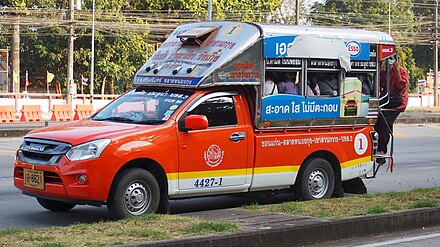 Pickup trucks/public passenger pick-up vehicles (songthaews) also serve as group taxis.
Pickup trucks/public passenger pick-up vehicles (songthaews) also serve as group taxis.
To get from the Nathon Pier to Bophut/Chaweng take a brown one which runs at regular intervals and will cost 50 baht to or from Bophut (Just ask the driver if the taxi is going that way and get on board. Pay when you get off.
If you want to go to a particular place, then you hire a taxi or songthaew, and negotiate the price with them first.
By motorbike
Motorbikes can be rented virtually anywhere on Ko Samui for between 120-700 baht per day depending on the size and season (small 125 cc bikes should cost no more than 200 baht even during New Year). It is recommended to hire only from a reputable company as there have been reports of scams. Some places have been known to steal bikes that they have rented out. Also, rental motorbikes are not insured. If they tell you they have insurance, it's not true. If something happens, you can't claim for it. Read the rental agreement extra carefully, as too many (it's not typical for other parts of Thailand e.g. Chiang Mai) will state that you may not replace any broken/damaged parts yourself. This is a scam, as instead they will replace it for you for a price several times higher (sometimes also stated in the agreement) than it actually costs. They will check any old scratches and/or serial numbers, if noted in the agreement, and demand that price even if you have already replaced that part yourself! For the same reason, inspect the motorbike carefully and be sure any existing scratches/damages are written in the agreement before you have taken the motorbike. Take photographs of the bike.
Motorbike shops will likely want you to leave your passport as collateral. This is a common practice in Thailand, and, by itself, shouldn't raise much concern, however most government travel advisory services advise against leaving your passport anywhere as a deposit for obvious reasons. Combined with the scams and bad practices mentioned above, however, it may lead to a situation where your passport is held as a hostage until you pay what they want. For this reason, it's unwise to return your motorbike immediately before your departure. Leave at least several hours, or perhaps a day, to settle any problems if they arise. If the shop's demands are clearly illegitimate (the agreement you have signed has silly conditions and prices, the price they ask for damages is unreasonable, or the damage was clearly done before you rented the motorbike) - call Tourist Police. They will help your cause, although shop owners will try to convince you otherwise.
If hiring a motorbike doesn't appeal to you, then there are motorbike-taxis willing to take you around for a (negotiable in advance, as foreigners are commonly asked an exorbitant price) fee, as well as other modes of transportation.
By bicycle
Bicycles can be hired very cheaply on Ko Samui. One shouldn't cost any more than 50-100 baht per day.
By car
There are many car hire options on Ko Samui, including the local arms of international companies such as Budget and Avis. Prices are fairly expensive (1,200-1,500 baht per day for a small car), but the convenience of a small, air-conditioned car may be worth it. You can pick up and drop off at the airport or some other locations. Driving is easy on the island as long as you are not in a hurry and having a car gives you easy access to almost all areas of the island. An international driving license is nominally required, although they will accept any valid driver’s license. But you may have issues in case of accident without the international license.
See

The major reason people come to Samui is, quite simply, to enjoy the beaches. Even though the two main beaches of Chaweng and Lamai have generally suffered due to mass development, they are still relatively impressive. Development has been thwarted slightly because of the island’s building height restriction, but this has caused sprawl.
Other than lying on the beach with a cold beer in hand and ogling at the babes and hunks sauntering past, there isn't all that much to see on the island. A certain pair of rocks on Lamai amuses some visitors, Bang Rak has a large but nondescript Buddha statue, and there are some waterfalls (notably Na Muang) of minor interest.
Beaches and places
- Ban Lipa Yai. This village grows high quality fruits, including rambutan, durian, mangosteen and the famed langsat.
- Bang Rak Beach. Also known as “Big Buddha Beach”, in northeast Samui, Big Buddha offers visitors good swimming and lovely views. The area has developed a lot and there are now plenty of restaurants, shops, and bars.
- Bophut Beach. In the north of the island, is a popular starting point for diving tours. The place isn't in any way as developed as Chaweng but there are still plenty of restaurants, shops, and bars.
- Chaweng Beach. The major beach on Ko Samui and one that has developed tremendously since the early 1990s. The beach used to be home to just a sprinkle of wooden bungalows but now the place is swamped with hotels, pizza joints, pubs, and go-go bars. Samui’s nightlife is becoming legendary but unfortunately does not always attract the highest standard of tourist. Chaweng’s once hippie-only backpackers have given way to a lot of lager louts. Chaweng is the place to be if you are one of them.
- Choeng Mon Beach. In the northeast corner of Samui just 10 minutes from Chaweng. Unlike the latter, it is a perfect place for relaxing.
- Grandmother and Grandfather Rocks. These odd-looking rocks at the south end of Lamai Beach bear a striking resemblance to male and female genitalia and they have turned into one of the island’s biggest attractions. For those who would like to hear a legend or two surrounding the rocks, they need only ask a local.
- Hin Lat Waterfall. Easily accessible by car. Some of the numerous tiny levels have a large basin for swimmers.
- Lamai Beach. Like Chaweng, Lamai has been transformed from a hippie hangout into a fun, party place packed out with bars and exciting nightlife. The beach though, is still in better condition than Chaweng and the place doesn’t get quite so crowded. But if it’s a quiet relaxing location you are after, then the tourist downtown, known as Lamai Beach, won’t be the ideal place for you. The quieter northeast end of the beach is lined by both good-quality luxury resorts and low-cost guesthouses and bungalows, which front along the highway towards Chaweng.
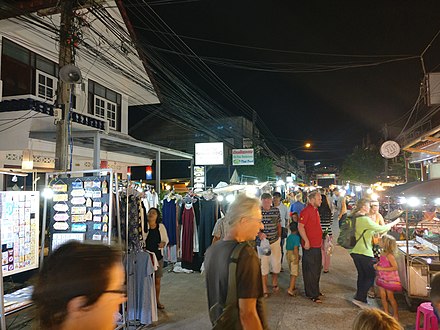
- Mae Nam Beach. This quiet beach, in the north of the island, is decent enough for swimming and sunbathing especially for families with children due to the shallow water.
- Na Mueang Waterfall. A local road leads to the Na Mueang 1 Waterfall just off Rte 4169. A walk of about 30 minutes ends up at the more scenic Na Mueang 2 Waterfall. Purple rocks surround the stream of water, which gushes in from an impressive height of around 79 m.
- Old House. This Chinese-style house, almost 200 years old, hints at Samui's distant cultural past. Grandpa Si and Grandma Maen Hancharoen, the present owners, open the house to visitors.
- Silver Beach (Crystal Beach). Beautiful beach which is normally a little less crowded than other nearby options. 2023-02-13
Diversions
- Monkey Shows. These shows can be observed at the open-air theatre on the main road behind Bophut beach. The entertainment also includes performing elephants. However, the capturing and training of otherwise wild animals is at best ethically questionable.
- Samui Aquarium and Tiger Zoo. Daily, 09:00-18:00. The undersea world of the aquarium has an amazing collection of tropical fish and other vibrant aquatic animals such as turtles and colourful coral. The tiger zoo is home to Bengal tigers and leopards. For those who are daring enough, they can have their photograph taken with the animals.
- Samui Butterfly Garden / Insect Museum. There is a huge collection of butterflies, some a quarter of a metre wide. In the nearby Insect Museum, you can see a variety of rare bugs and a bee house.
- Buffalo Fighting Festival: One of the best-known festivals on Ko Samui is the Buffalo Fighting Festival which is held on special occasions such as New Year's Day and Songkran. Unlike Spanish bullfighting, the fighting on Ko Samui is fairly harmless. The fighting season varies according to some ancient customs and ceremonies. The buffalo are beautifully decorated with ribbons and gold-painted leaves. Before the contest, which lasts just two rounds, monks spray the buffalos with holy water. The winning owner typically takes home millions of baht in prize money.
- Ten Stars Samui Art Party: A recurring cultural event bringing together art lovers, local Thai and international artists, and their new, original artworks. The annual event, hosted at various high-end resorts and other high-end venues on the island, focus on building the art community on Ko Samui, with presentations by featured artists.
- Samui Triathlon: The International Triathlon Union organizes this event every year. This event draws more than five hundred participants from around the world.
Temples
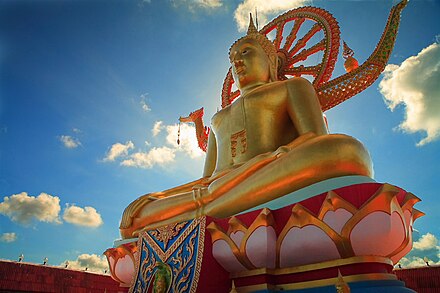
- Laem Sor Pagoda Ko Samui. This chedi (pagoda) at Laem Sor temple is one of the most important shrines on Ko Samui. The structure with its yellow tiles which gives off a golden aura is quite impressive.
- Wat Khunaram Ko Samui. This temple is the island’s most famous temple for its mummified monk on display. The mummy sits upright in a glass casket and devotees offer it flowers and incense. The mummy is in fact the body of a very revered former abbot of the temple who was also a meditation master who was able to predict his own death.
- Wat Phra Yai (Also known as Big Buddha Temple). Has a 15 m tall statue of the Buddha. It was built in 1972.
Do
The usual panoply of water sports are available.
Snorkeling and diving
Snorkeling or diving directly off Ko Samui itself is generally mediocre, since the shallow bays and sandy beaches tend to lead to silt in the water and poor visibility. However, the islands around Samui, notably Ko Tao (~1 hr away) and Ang Thong National Marine Park, offer some of the best diving in the world, surrounded by crystal clear water (distances of up to 10–30 m) and stunning coral. The best time year of the year to dive in the Ko Samui is between Jun-Aug, it is still perfectly possible to dive virtually all year round.
If you're a serious diver, you're probably better basing yourself in Ko Tao itself or going on a liveaboard tour, but if you just want a casual day trip, there are many dive shops on the island offering them in Chaweng. The dive boats tend to leave from the pier at Bophut and Bang Rak.
Ko Kra & Ko Losin: These two small islands to the southeast of Samui don't get too many divers due to their remoteness. Blacktip sharks, manta rays and hard to find loggerhead turtles can be seen.
Samran Pinnacles: Since the currents in this area are often quite strong, this site is recommended for experienced divers only. Due to the currents, the site is a haven for larger pelagics such as barracuda and jacks.
Water parks
Other
- Ten Stars Samui Art Party. A recurring cultural event bringing together art lovers, local Thai and international artists, and their artwork. The annual event, hosted at various resorts and other venues, focus on building the art community on Ko Samui, with presentations by featured artists. 2017-09-01
- Koh Samui THA Midnight Run. The Ko Samui Midnight Run is a charity run organized by the Thai Hotel Association (THA) and the Thai Association of Ko Samui (TAKS). It is a yearly event usually held in March. With up to 2000 participants, the run is one of the biggest on Samui and in Thailand. Participants will run 5 or 10 km around the buzzy and lively streets of Chaweng Beach. The first run was held in 2013. Entry fee, 500 baht 2017-09-04
- Samui Regatta. A sailing race held every year. The tournament is internationally known and competitors come from as far away as Australia, Singapore, Japan and China. The event began in 2002. Entry fee, 22,500 baht; each crew member, 5,500 baht 2017-09-04
- Samui Triathlon. The International Triathlon Union organizes this event every year. This event draws more than five hundred participants from around the world. 2017-09-01
Eat
Individual listings can be found in Ko Samui's district articles
Samui is well known for its coconuts, which are available everywhere and quite tasty. Being an island, seafood is generally a good choice although in high season demand often exceeds local supply. The larger beaches have a number of international restaurants as well (often run by Thai-farang couples) with Bophut having a particularly good reputation. Southern Thai food in general is renowned for its spiciness. Much of the cuisine has its origins in Malay, Indonesian, and Indian food. Favourite dishes from the south include Indian-style Muslim curry (massaman), rice noodles in fish curry sauce (khanom jeen) and chicken biryani. Popular local foods are salted eggs and rambutan.
Dual pricing is common: some restaurants have two menus, one for tourists and the other for Thai people, at about a quarter of the tourist prices. Main courses in a standard, low-key Thai restaurant should be under 100 baht (except some seafood dishes), so if prices seem unreasonably steep, head elsewhere. Always check prices and menu first so you don't have to argue when the bill is served.
Drink
Individual listings can be found in Ko Samui's district articles
There are innumerable options for a drink, ranging from the loud and brash tourist pubs and girlie bars of Chaweng to the candle-lit romantic bars of Bophut. The local beers of Singha, Tiger, Chang and Leo are around 90 baht, with imported beers up to twice that. Wine is especially expensive and usually costs over 2,000 baht per bottle.
Beer bars
Chaweng Beach is famous for its beer bars staffed by pretty hostesses. Buy them a 'girlie drink' and you'll be in entertaining company. Beer bars can be found all over Chaweng. The bars offer pool, Connect4 and other popular bar games. Since the nightlife on Chaweng can devolve into serious debauchery at times, the local law enforcers are strict in regards to closing times. The official closing time in "entertainment zones" is 01:00, that on practice is usually somewhere between 01:00 and 02:00.
Karaoke
At karaoke bars customers can either choose a private room or sing in the main lounge for everyone to hear. There are Thai songs and international songs. There may be pretty hostesses available to sit for a pleasant chat. These bars are especially popular with Asian tourists.
Nightclubs
Chaweng Beach is packed out with nightclubs playing mostly commercial pop and electronic music and serving exotic cocktails.
Rum distillery
There is a distillery that brews 5 flavours of rum on one of the side roads on the South Coast of the island, which offers tours during the sugar cane season and free samples any time. The flavours are natural (sugar cane), lemon, orange, pineapple and coconut. Natural and coconut are quite tasty, lemon has a very strong pleasant citrus flavour, and you won't miss anything if you don't try the other two. They also have a delicious mixer to serve with consisting of lime juice, cinnamon and other spices. Worth heading to if you're in the area or just for the novelty of sampling authentic Thai rum. Very friendly staff.
Sleep
Individual listings can be found in Ko Samui's district articles
With only an estimated 25,000 rooms, accommodation may be a problem in high season. If you're into nightlife, Chaweng is definitely the place to be, but also Lamai offers some late entertainment. If you're into a quieter beach experience, try the northern beaches like Mae Nam, Bophut, or Choeng Mon. Also the South Coast and west coast are good compromises. Nathon is in the centre part of the island, and offers reasonably priced accommodation with hotel rooms from around 400 baht.
There are plenty of luxury private villas on Ko Samui. The villas usually have dedicated staff on hand to offer customised services such as breakfast, dinner and in-villa spas. You can also arrange for them to pick you up at the airport.
Stay safe
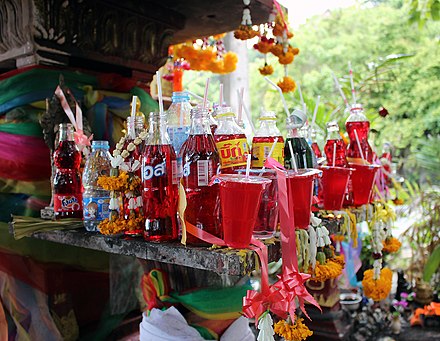 Tap water is not potable. Liquids from sealed bottles nearly always are, and should be used wherever possible. Restaurants buy ice made from purified water, so don’t worry about ice. Tap water in most hotels should not be used for drinking or brushing teeth unless explicitly labelled as safe.
Tap water is not potable. Liquids from sealed bottles nearly always are, and should be used wherever possible. Restaurants buy ice made from purified water, so don’t worry about ice. Tap water in most hotels should not be used for drinking or brushing teeth unless explicitly labelled as safe.
Motorbikes are somewhat risky, but Jeeps, trucks, and other cars for rent are readily available at very reasonable rates, and are considerably safer. If you must use a motorbike always wear a helmet and never drive drunk. Make sure you have a travel insurance, as most vehicles comes with the compulsory insurance only, that covers nearly nothing and the driver may be personal responsible for damage. Rental cars from major companies however, may have a full insurance. Roads are hazardous with many large potholes.
After a good time drinking in the party areas of Chaweng, Bophut, and Lamai taxis and motorbike-taxis are readily available to take you home. However, be careful: Generally, taxi and motorbike-taxi drivers tend to rip you off.
All-terrain vehicles (ATVs) are available to rent, but are not be registered for road use and are not allowed in most areas.
Be careful at beaches at night as crimes sometimes occur there.
If travelling to Ko Samui, Ko Pha Ngan, or Ko Tao by bus, do not store any valuables in your checked luggage. Sometimes there are thefts from people's belongings stored in the hold. They will pick the lock and steal valuables and then reseal the luggage, and when you realise it they will be long gone. Do not let valuables out of your sight when transferring from the train to the islands.
Connect
Thailand also has more than its fair share of Internet cafes. The hourly charge is about 30 baht. For those in rural areas, hooking up to the Internet can be done via broadband satellite. GSM networks of all major Thai mobile operators cover the island quite well. While roaming is an option, purchasing local SIM card will save you a lot on international calls. Even more, GPRS/EDGE/3G service is a cheap and convenient way to access Internet from virtually anywhere. See the main article for details.
Most resorts, and also many restaurants, cafés, and shopping centres offer free Wi-Fi.
Cope
Medical facilities
For those who are just a little sick there are countless clinics and pharmacies in all major tourist areas. Emergency calls for ambulance service can be direct to a hospital or to Samui Rescue Foundation (077 42 1444) or Samui Tourist Police (077 42 1281) or 1155. The public hospital is in Nathon (077 42 1230). There are four private hospitals in the Chaweng area.
- Bandon Hospital Samui, Samui Ring Rd, Bophut (next to BigC), +66 77 24 5236.
- Bangkok Hospital Samui, 57 Moo 3, Samui Ring Rd, Chaweng, Bophut, +66 77 42 9500.
- Samui International Hospital, 90/2 Moo 2, Chaweng Beach Rd, Bophut, +66 77 42 2272, +66 77 23 0781-2, info@sih.co.th.
- Thai International Hospital Samui, Samui Ring Rd, Bophut (opposite Tesco/Lotus), +66 77 24 5271-6.
Go next
- Ang Thong National Marine Park — scuba and snorkelling within striking distance
- Khao Lak – Resort region and diving centre, gateway to the Similan and Surin Islands
- Ko Pha Ngan — home of the infamous Full Moon Party in Haad Rin, but there are also near-untouched landscapes—and detox centers
- Ko Tao — among the best places in Thailand to learn to dive.
- Krabi Province for more beaches and islands.
- Pattaya, Phuket and Chiang Mai — a short hop away on Bangkok Airways
- Surat Thani — the mainland's closest big city